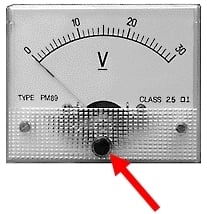What device is used for testing altitude and airspeed indications?
What is the purpose of this knob?
If a bundle passess through a bulkhead hole and the clearance is less...
Which of the following removes the oxide from the surface of the work...
What do you call the process of grounding all aircraft components...
What is the purpose of a heatsink?
Which device are specifically designed for ultra safe resistance on...
What device is used to measure the resistance of the insulation while...
What device is used to generate alternating current of desired...
What device interrogates the ATC transponder and tests the validity of...
Fuel Quantity Indication Tester works in the principle of
What is the purpose of a loom comb?
What do you call the filler material that forms the physical and...
What device is used to determine the shape of a video pulse or signal...
Crimp types for 22-18 AWG size is identified with what color code?
What type of soldering iron uses the magnetic properties of the...
What type of track repair is used in this diagram.
What type of equipment is used to check the resistanse of fire...
To measure voltage in a circuit, the voltmeter should be connected in...
What is the process of "smoothing-out" the oscillation of the...
What device is used to attenuate a signal without distorting the...
A signal generator used for testing LOC, G/S, VOR, MKR and...
What is the purpose of the mirror on the scale of an analogue...
_________ is performed to ensure solderability and keep all...
In a permanent magnet moving coil, the pointer is returned to its...
What device is used to measure forward and reflected power of RF radio...
Identify the type of splice shown.
When securing wire bundles, the bundles should be able to be deflected...
What part is used to attach a ground wire to the shielding braid...
An ammeter must never be connected ________ the power supply.
When testing for insulation resistance, it is necessary to test at a...
Which device is categorized by 50:5, 100:5, 300:5, etc. as ratio of...
Which of the following soldering defects is caused by poor wetting?
What device is used to determine the digital state of an electronic...
Using an oscillosope, the voltage at selected test point is measured...
What type of meter is shown?
Which side is used for removal of contacts?
Small quantity of solder applied to the junction of the working...
What will happen if an analog voltmeter is reverse connected into an...
Identify the problem in the crimped ring terminal.
What is the purpose of a sacrificial washer installed with the bonding...
If the arrow is toward the load, a RF Directional Wattmeter is...
Which gauge size of wire typically uses an uninsulated terminal?
Which of the following is not allowed when installing a coaxial cable?
What type of meter is used to measure the pressure being applied to...
An ohmmeter with sensitivity of 10,000 per volt means that
Which of the following is a temporary splice type?
What tool is used in removing solder from a base material?
What type of solderless termination is shown?
Which method is used in damping othe vibrations due to rectifiers in...
What device is used to subtitute loads in an electrical system?
If the range of current to be measured is greater than the full scale...
What device works on effect of sensed DC magnetic field on a self...
Which device is commonly known as of an electrodynamic type?
What device is a low reading ohmmeter and measures resistance in...
What is the minimum bend radius when routing a coaxial cable?
What process is described as the free flow and spreading of...
What device is connected to the d'Arsonval meter to allow...
A good practice of bending wire bundles is to allow bend radius of...
Routing of wire bundles in the aircraft should be at least _____...
What device is used for pre-tinning components and wires fitted...
Which of the following is true about an ohmmeter?
What device is capable of measuring system lead resistance,...
What type of tool tip will provide maximum heat flow?
What device is used in analyzing the magnitude and shape of reflected...
The method of connecting conductors using a crimped connector is...
Identify the defect with this crimped terminal.
What device is used to regulate the voltage output in a signal...
Before using an attenuator probe, you must
When using an ohmmeter, the needle pointer will deflect to what...
What is the purpose of partially filling the terminal with...
What type of meter uses the principle of magnetic repulsion between...
A wattmeter is rated in ______.
















